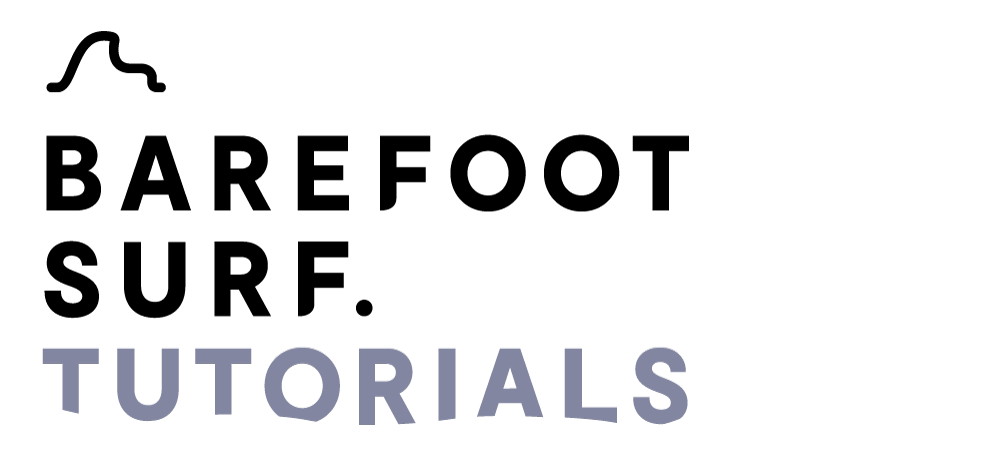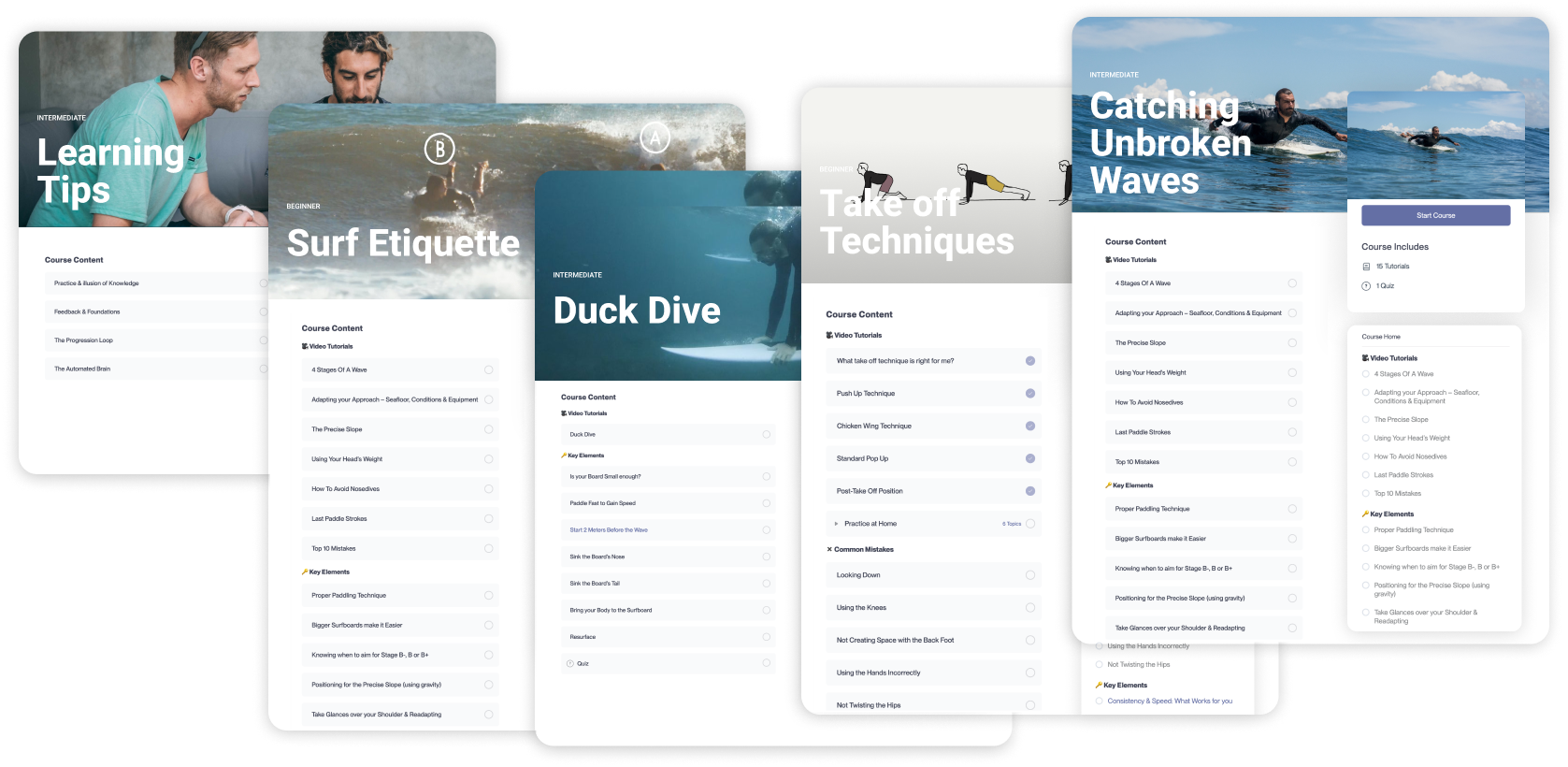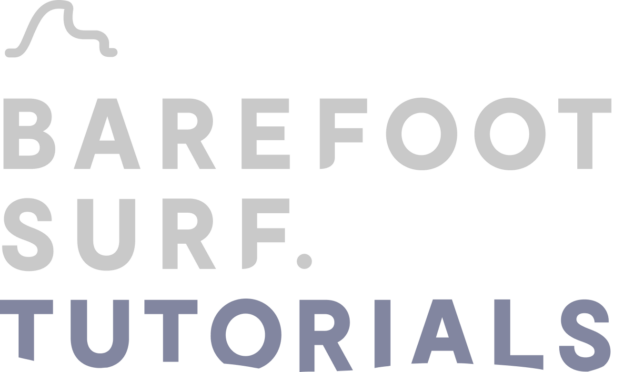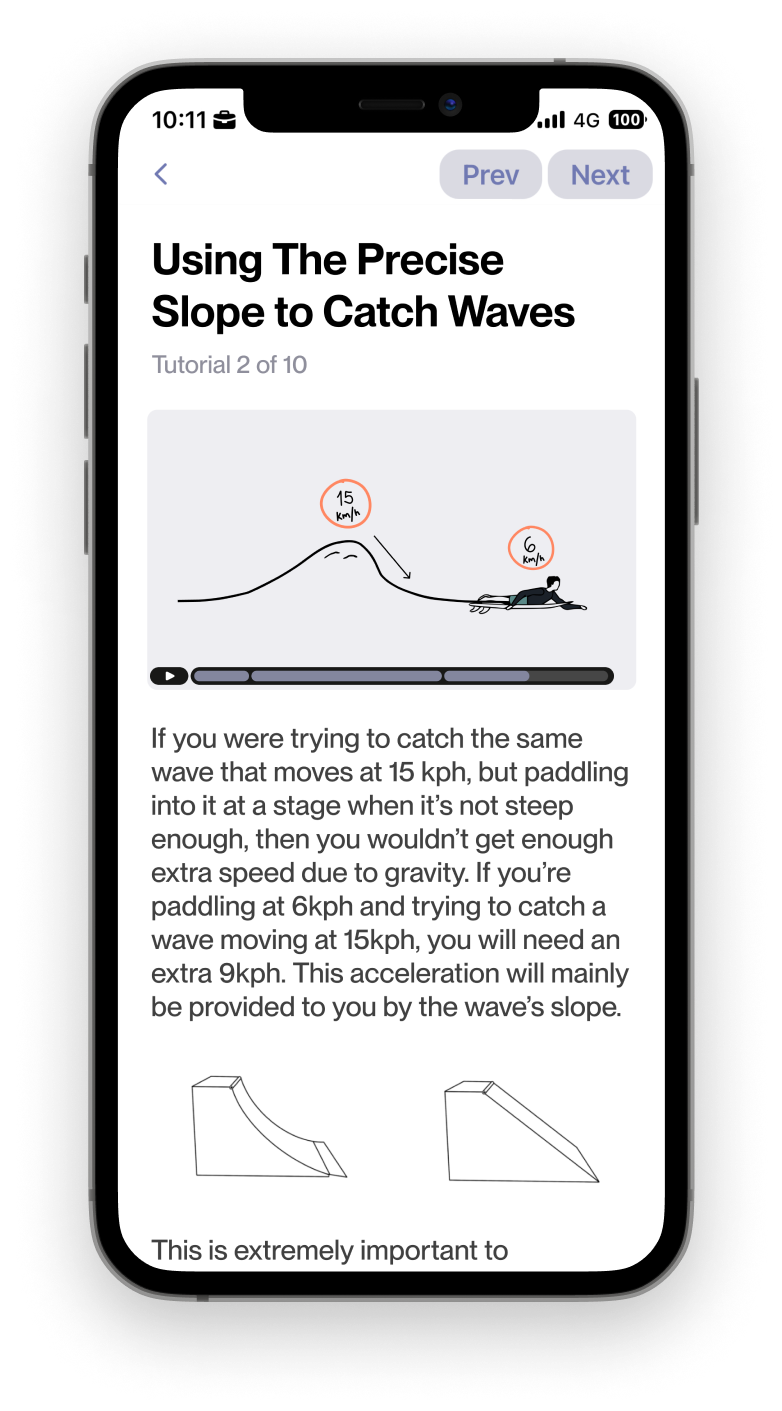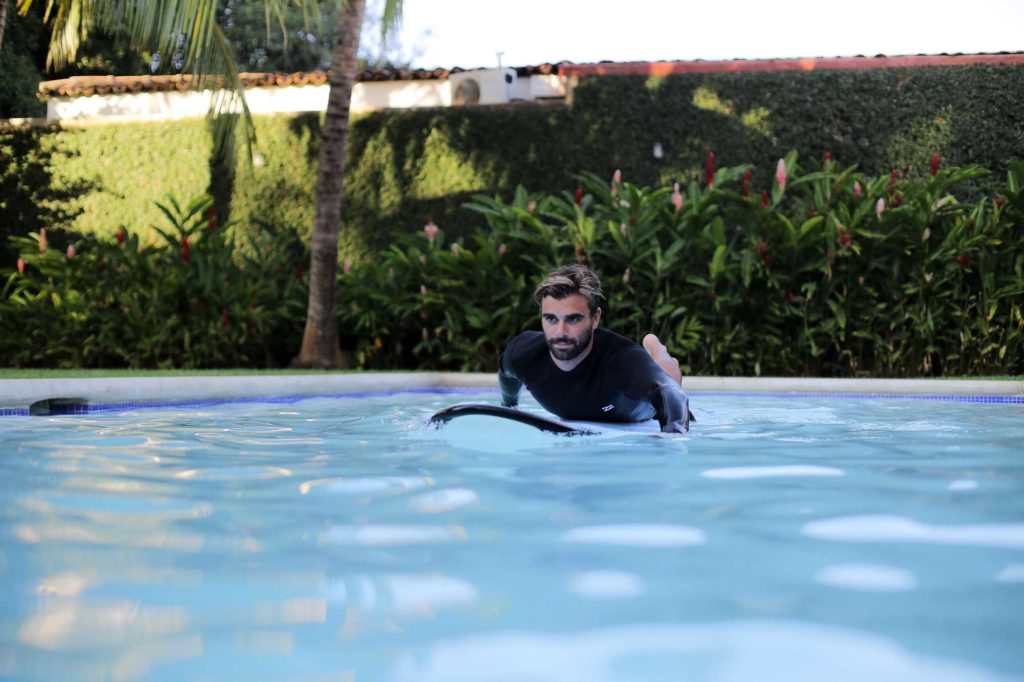
5 Things to Know when you Start Surfing
Learning how to Surf? What you MUST know about surfing before heading out in the ocean: surf ethics, equipment, tips for beginners, choosing a surf spot & more.
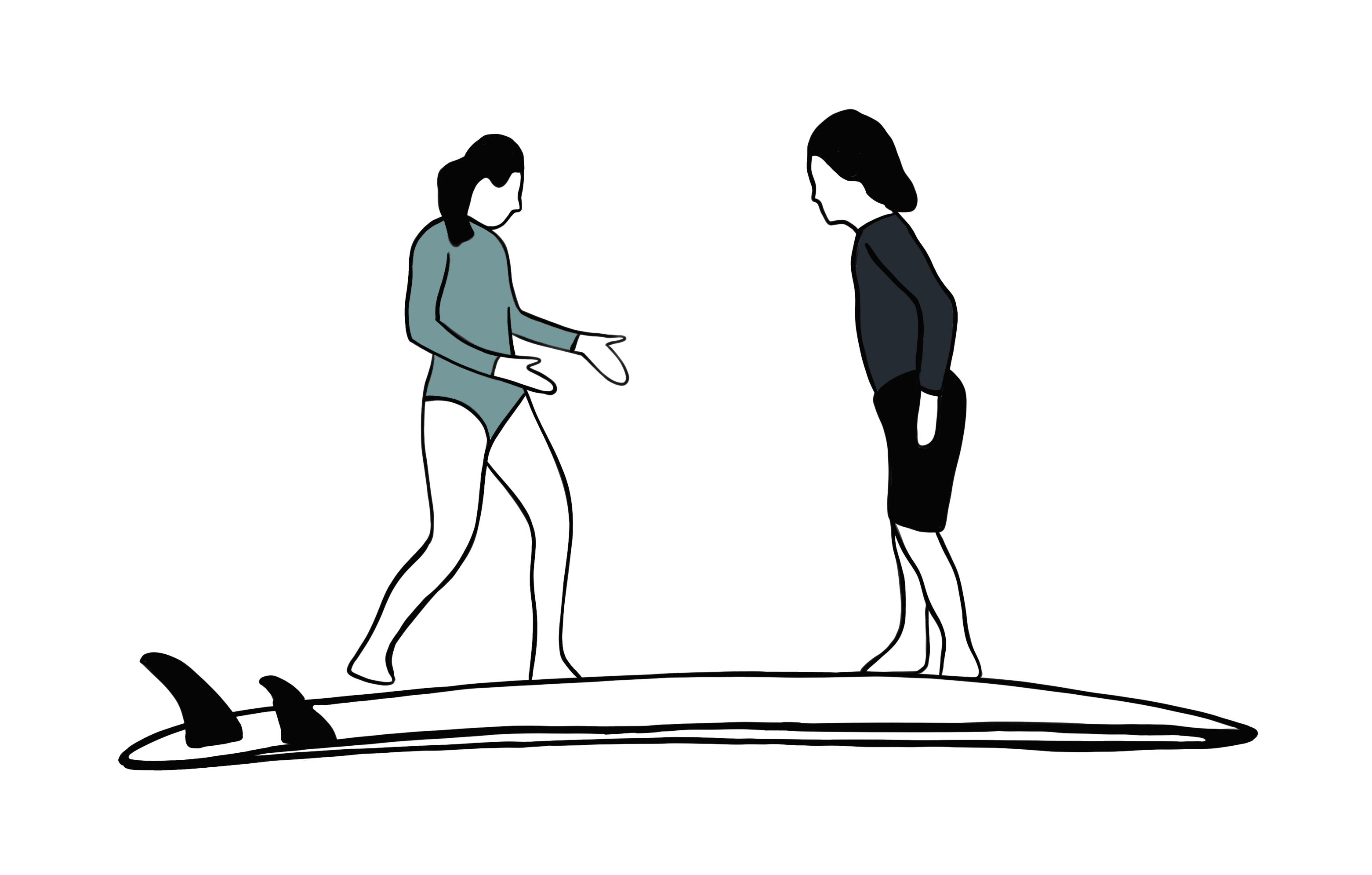
#1 The Learning Curve
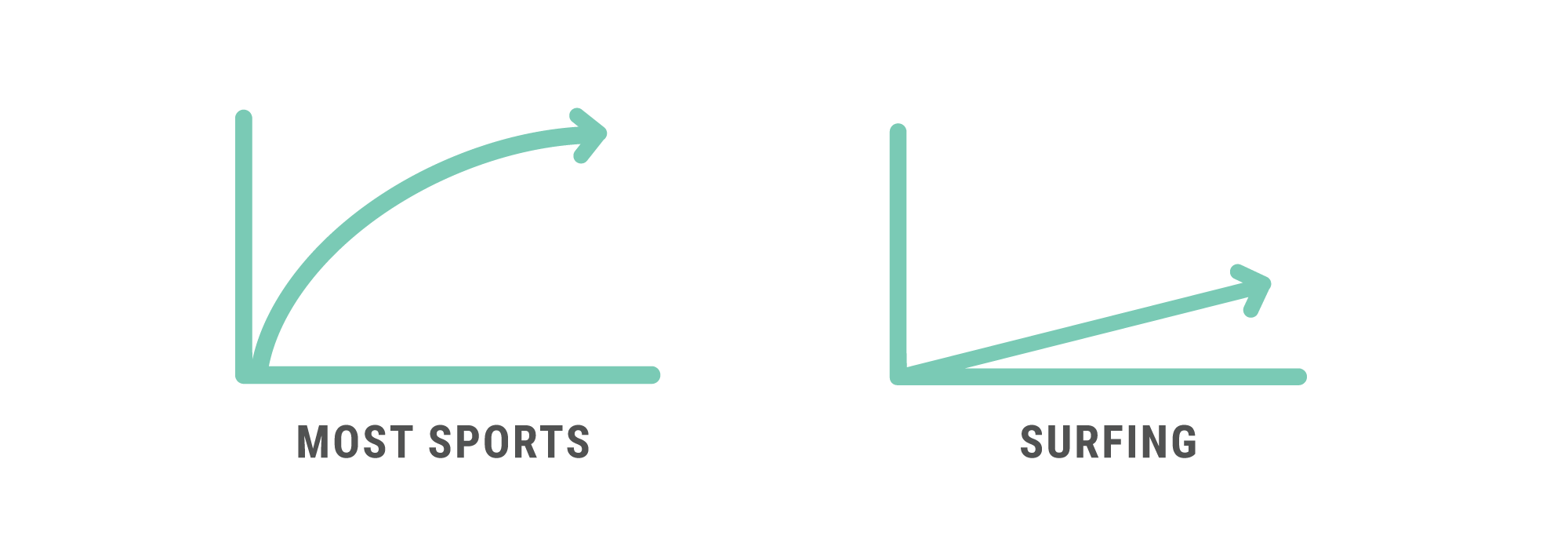
#2 The Importance Of Your Surfboard
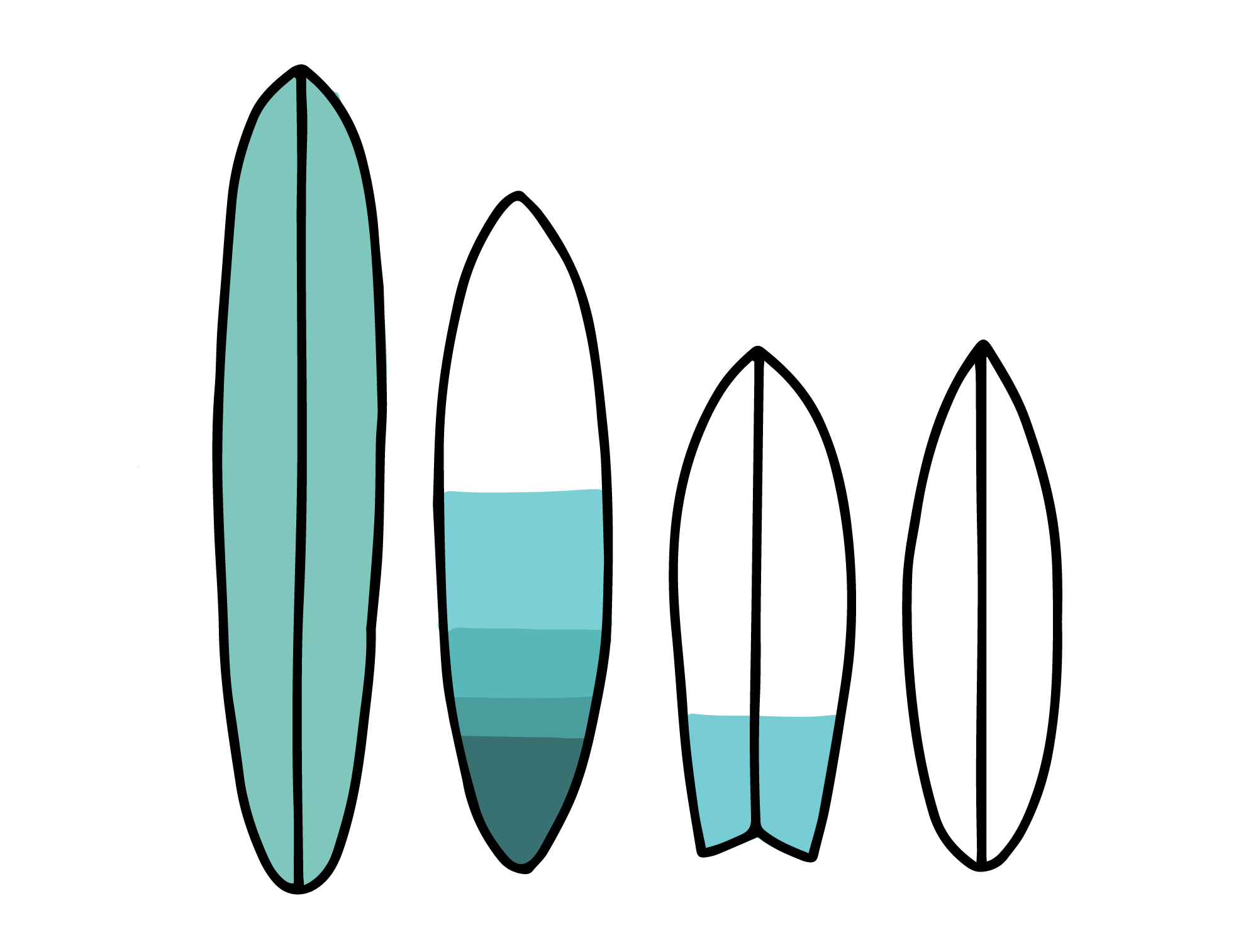
In any sport, having the right equipment helps you perform. But surfing is different. It can make the difference between surfing 20 waves or 0 waves in your session.
Choosing the right surfboard will completely change the experience. It’s not about having the “brand new model”. It’s about having the right volume and rocker. The volume is the measurement of how much flotation the board has. It’s a function of length, width and thickness. Basically, when you start surfing, you want lots of volume (choose either a longboard or a foamboard, boards that are wide, thick, long and have a flat rocker). Our favourite boards for the first days are 7″4 Gnaraloo foamboards, they are very thick and wide, but not too long so the nose doesn’t dive often.
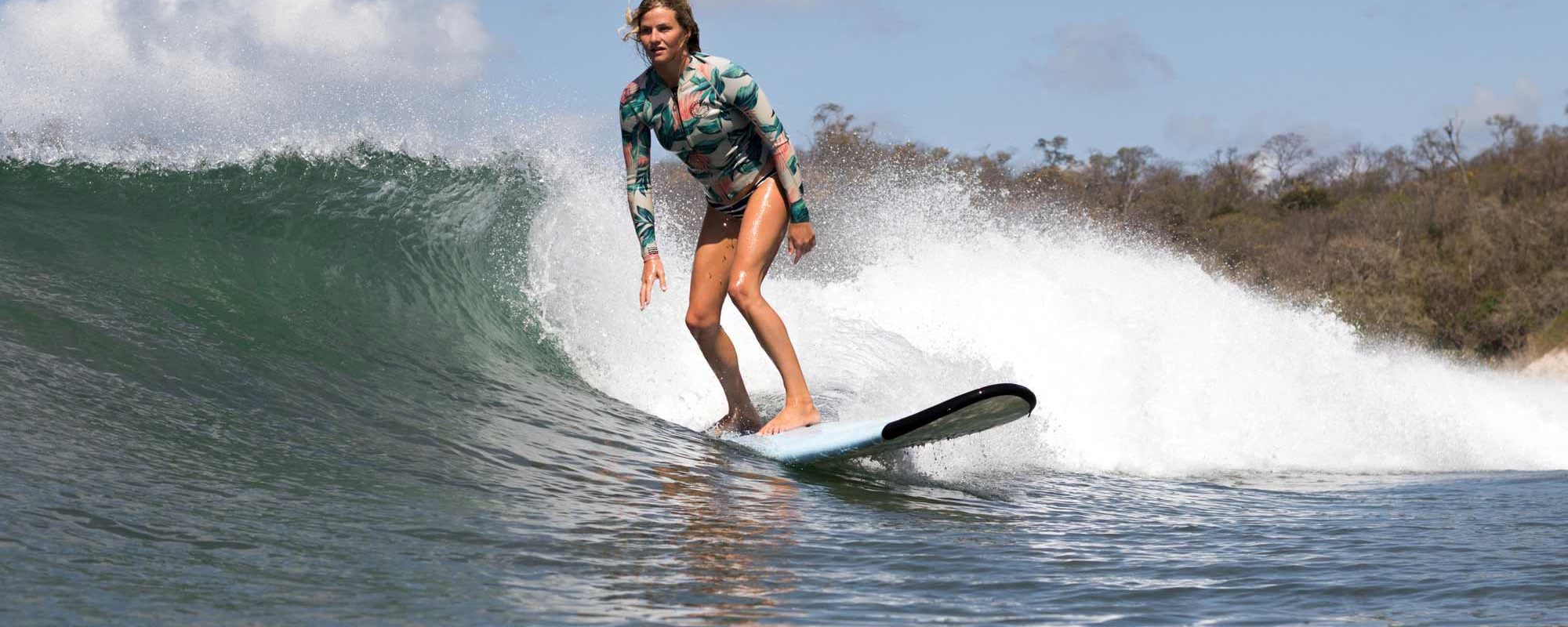
#3 Choose The Adequate Surf Spot

This is extremely important. It can determine whether you have the best time of your life or the worst. Many surfers will tell you: “start on a beach break, it’s safer”. This is true, but only to a certain extent. Of course, it’s better to fall on sand than on rocks or coral reefs. But the truth is, there are some sandy beach breaks for advanced surfers, and some rocky point breaks for beginner surfers. To make things even more confusing, some spots can be perfect to learn on some days, and on other days only be good for experts. It all depends on the wave conditions.
If you want to know if a spot is good for your level, you must not only look up the spot info but also the daily wave conditions. There are many surf websites and forums loaded with information on surf spots. Our favourite is Surfline.com because professionals have written it and their info is usually very accurate. As you can see on the right column, they tell you what type of board you need, adequate surf level, tide, swell, bottom, etc.
Doing some research on the web is always good. But the best thing is to have knowledgeable and experienced surfers that have been surfing the area for a long time. They are the ones who can really tell you where to go according to your surf level.
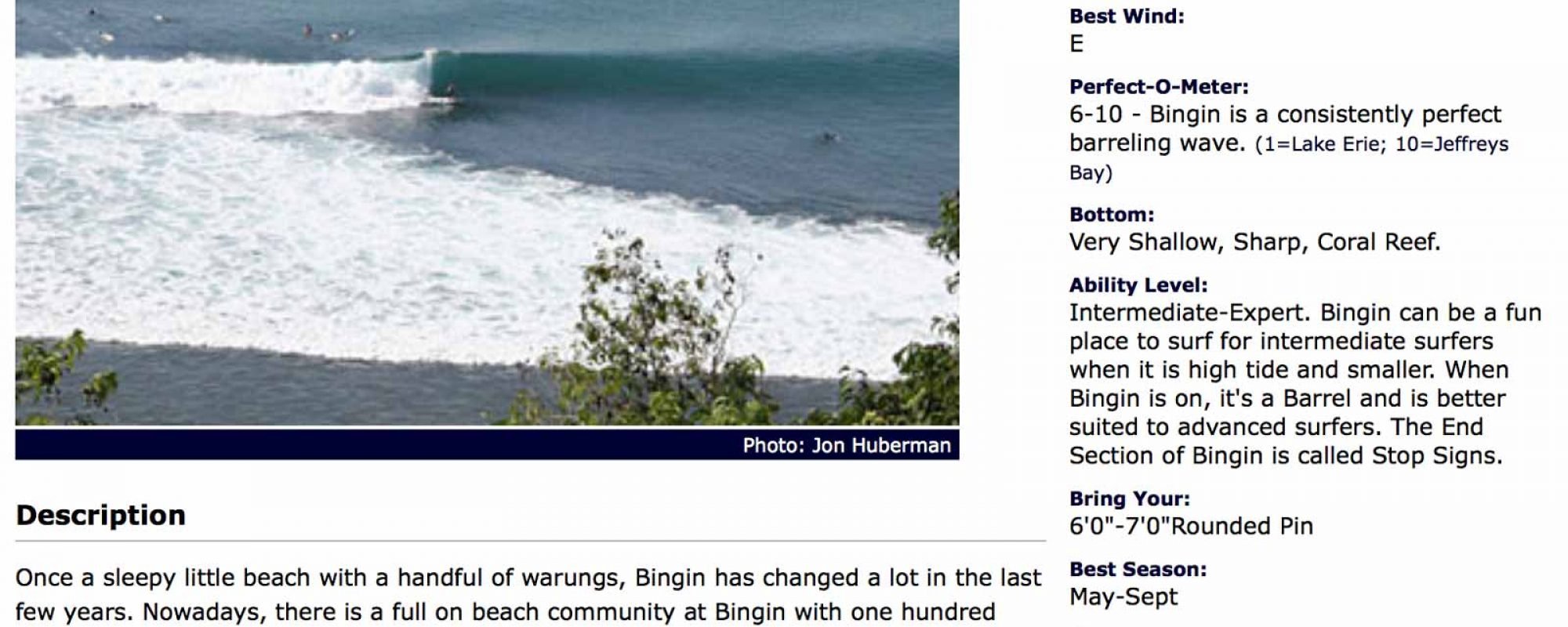
#4 Have Someone To Show You The Basic Technique
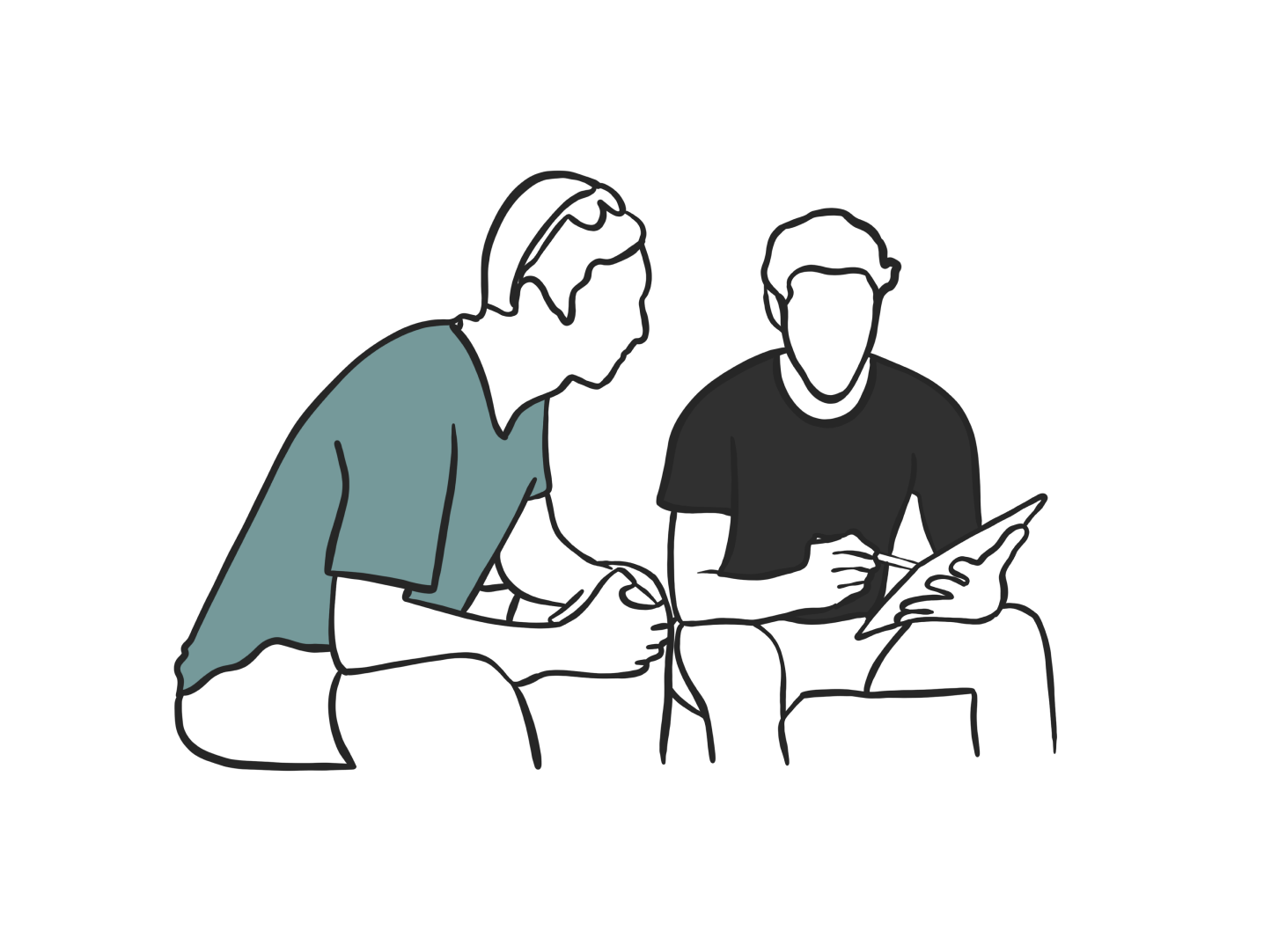
As seen on point #1, surfing is one of the most complex and technical sports in the world. Imagine learning the wrong basic techniques and then having to “unlearn” your bad habits before you can continue your progression.
Trust us, this advice comes from inland surfers that started to dedicate their life to surf way too late in their life. Still today our coaches make us realize we’ve learned certain things the wrong way and it’s very difficult to change old habits. The bottom line is: if you’re serious about learning to surf, learn it the right way. Have an experienced friend or surf coach show you the right basics for the first few days.
#5 Learn About Surf Ethics

There are many, many rules to go by in surfing: don’t paddle inside, don’t drop in, don’t snake, don’t ditch your surfboard, and so on. It may sound very confusing when you are new to the sport. Below are the top 3 things you should focus on. If you want to know more, watch our Surf Etiquette video for the Top 9 Rules you need to know.
Don’t Drop In
The drop in is the main violation of surf ethics. It’s the one we see way too often. Basically, it means “stealing” somebody else’s wave. Quality waves are meant to be ridden by only 1 surfer. This way the lone surfer can enjoy specific powerful areas of the wave, where only 1 surfer can fit.
So how to know if it’s your wave or somebody else’s? When you paddle for a wave, look on both sides (right and left) before you take off. If a surfer is catching the wave further inside, closer to the peak, he has priority. If you are closer to the peak, then you will be the one with the longest ride, so you have priority.
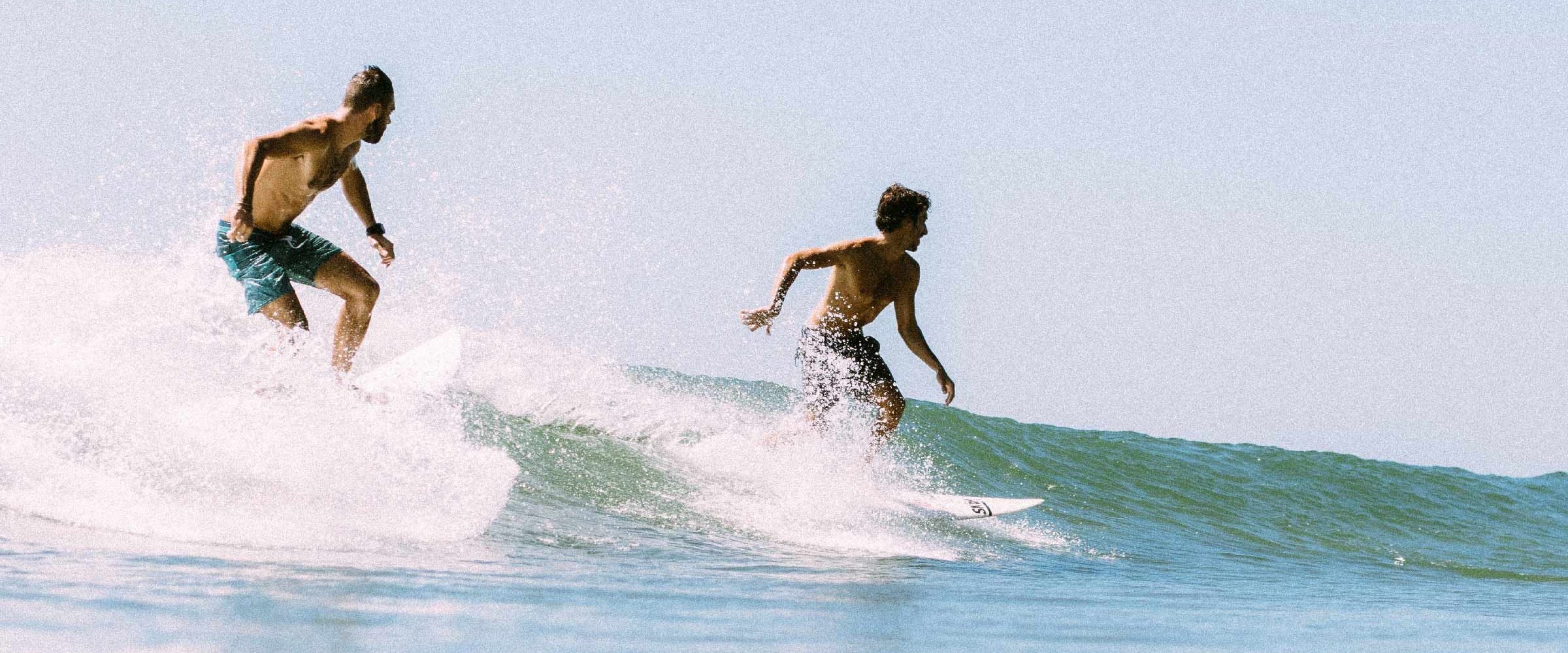
Choose The Right Spot For Your Ability
We have seen how to do this in point #3. This is a very important aspect of surf ethics.
Respect The Locals
If you are new to surfing, you might not know this. Every surf spot has its own “vibe”. Some spots are more “localized” than others. This means some local surfers are more “inviting” to strangers than others, and this varies in different surf spots. Just always remember: you are not home. These surfers might have been surfing these waves for years since they are kids. When you get to a surf spot, take time to feel and analyze the vibe. Be positive, respectful and unselfish. Share waves and don’t drop in!
